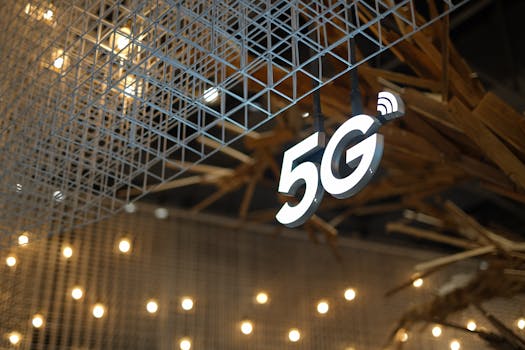
From 5G to AI: The Tech Revolutionizing How We Connect
The way we connect with each other and the world around us is undergoing a significant transformation. The advent of 5G networks and Artificial Intelligence (AI) is revolutionizing the way we communicate, access information, and interact with devices. In this article, we will explore the impact of 5G and AI on our daily lives, industries, and the future of connectivity.
What is 5G and How is it Revolutionizing Connectivity?
5G, or the fifth generation of wireless technology, is a game-changer in the world of connectivity. With speeds up to 100 times faster than its predecessor, 4G, 5G enables faster data transfer, lower latency, and greater reliability. This means that users can enjoy seamless video streaming, online gaming, and virtual reality experiences. 5G also enables the widespread adoption of IoT (Internet of Things) devices, which can connect and communicate with each other in real-time.
The impact of 5G on industries is significant. For instance, in the healthcare sector, 5G enables remote consultations, telemedicine, and the transmission of large medical files. In the manufacturing sector, 5G facilitates predictive maintenance, quality control, and supply chain management. The use of 5G in smart cities also improves public safety, traffic management, and energy efficiency.
The Role of AI in Enhancing Connectivity
AI is another technology that is transforming the way we connect. AI-powered algorithms can analyze vast amounts of data, identify patterns, and make predictions. In the context of connectivity, AI enables network operators to optimize network performance, predict and prevent outages, and provide personalized services to users. AI also powers chatbots, virtual assistants, and other interfaces that simplify user interaction with devices and services.
The integration of AI with 5G networks creates a powerful combination. For example, AI can analyze data from 5G-enabled IoT devices to predict maintenance needs, detect anomalies, and optimize performance. AI can also enable the creation of smart homes, smart cities, and smart industries, where devices and systems can communicate with each other in real-time to improve efficiency, productivity, and safety.
The Future of Connectivity: Trends and Opportunities
As 5G and AI continue to evolve, we can expect to see new trends and opportunities emerge. One of the key trends is the growth of edge computing, which enables data processing and analysis at the edge of the network, reducing latency and improving real-time decision-making. Another trend is the adoption of quantum computing, which can solve complex problems that are currently unsolvable with traditional computers.
The future of connectivity also holds many opportunities. For instance, the use of 5G and AI in education can enable personalized learning, remote learning, and access to educational resources. In the transportation sector, 5G and AI can enable autonomous vehicles, smart traffic management, and improved public safety. The use of 5G and AI in healthcare can also improve patient outcomes, enable remote consultations, and facilitate medical research.
Conclusion
In conclusion, the advent of 5G and AI is revolutionizing the way we connect with each other and the world around us. These technologies have the potential to transform industries, improve our lives, and create new opportunities. As we look to the future, it is essential to continue investing in research and development, infrastructure, and education to ensure that we can harness the full potential of 5G and AI.